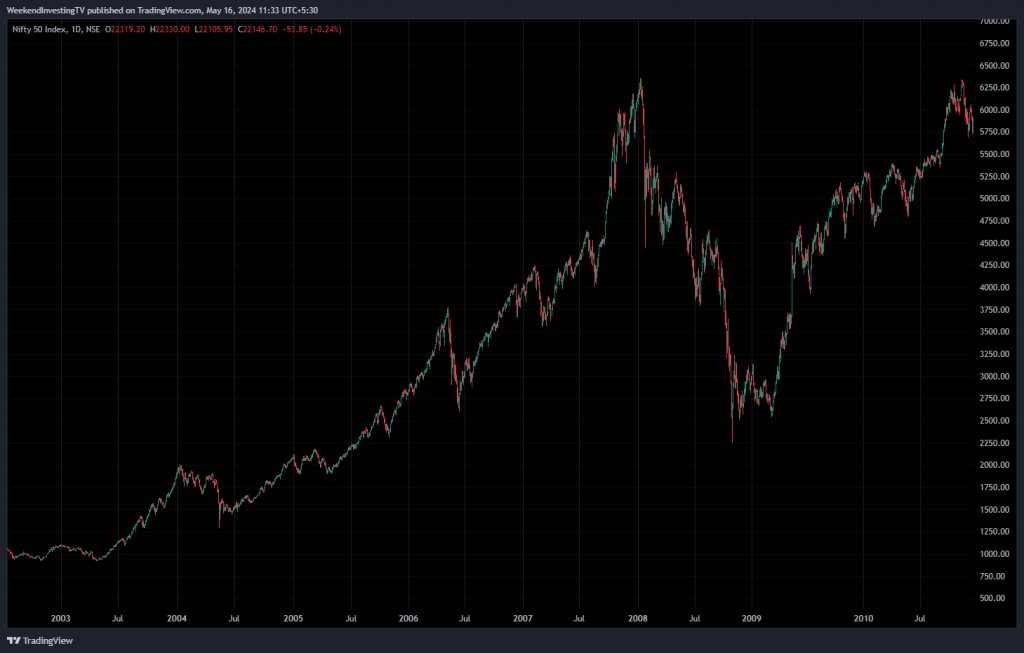In 2008, the Indian markets experienced one of the worst crashes during the Global Financial Crisis (GFC). The Nifty index plummeted from near 6400 to nearly 2200, a dramatic 70% drop. However, this decline came after a massive surge. From the third quarter of 2003 to January 2008, the Nifty had grown six and a half times. This context is crucial to understanding why the crash was so severe.

Exponential Growth and Market Corrections
Imagine today’s market situation: if the COVID-19 bottom was at 7500 Nifty and it grew six times, we would see the Nifty at 45,000 to 50,000. Such exponential growth creates a high risk of sharp corrections. Back in 2008, the Nifty had a similar exponential move, leading to an eventual massive correction. If the market had grown only three times instead of six, the correction would have been less severe.
Comparing Past and Present Market Trends
The current market has not experienced the same level of exponential growth as in 2008. Before COVID-19, the Nifty was at 12,000, and now it is around 22,000. This growth, over four years, is significant but not exponential. The risk of a massive correction like in 2008 is lower. Markets do fluctuate, but the current growth pace suggests a less volatile correction.
Lessons from Past Market Moves
Looking back to 2003, the Nifty started at 1000 and doubled to 2000 within 18 months. Then, the market crashed due to political changes in May 2004 but recovered quickly within six months. It continued to rise, reaching 3800 before another 30% correction. Yet again, it bounced back within six months. These historical moves show that markets often recover quickly from corrections.
Resilience of Markets Post-Crash
The 2008 crash was a once-in-a-century event, influenced by global leverage and the Lehman Brothers collapse. Despite the severity, the market recovered to its previous high within a year and a half. By the third quarter of 2010, the Nifty was back at its 2008 peak. Investors who stayed invested through the downturn saw their portfolios recover without adding new money.
Strategic Investing for Market Fluctuations
Successful investing requires understanding which sectors are performing well. After a market correction, the sectors that led the recovery often differ from those that led the previous bull run. A self-correcting investment strategy that adjusts to include the best-performing sectors can help investors navigate market fluctuations. History shows that investors who stay adaptable and informed are less likely to be stuck in prolonged downturns.

Disclaimers and disclosures : https://tinyurl.com/2763eyaz
If you have any questions, please write to support@weekendinvesting.com











